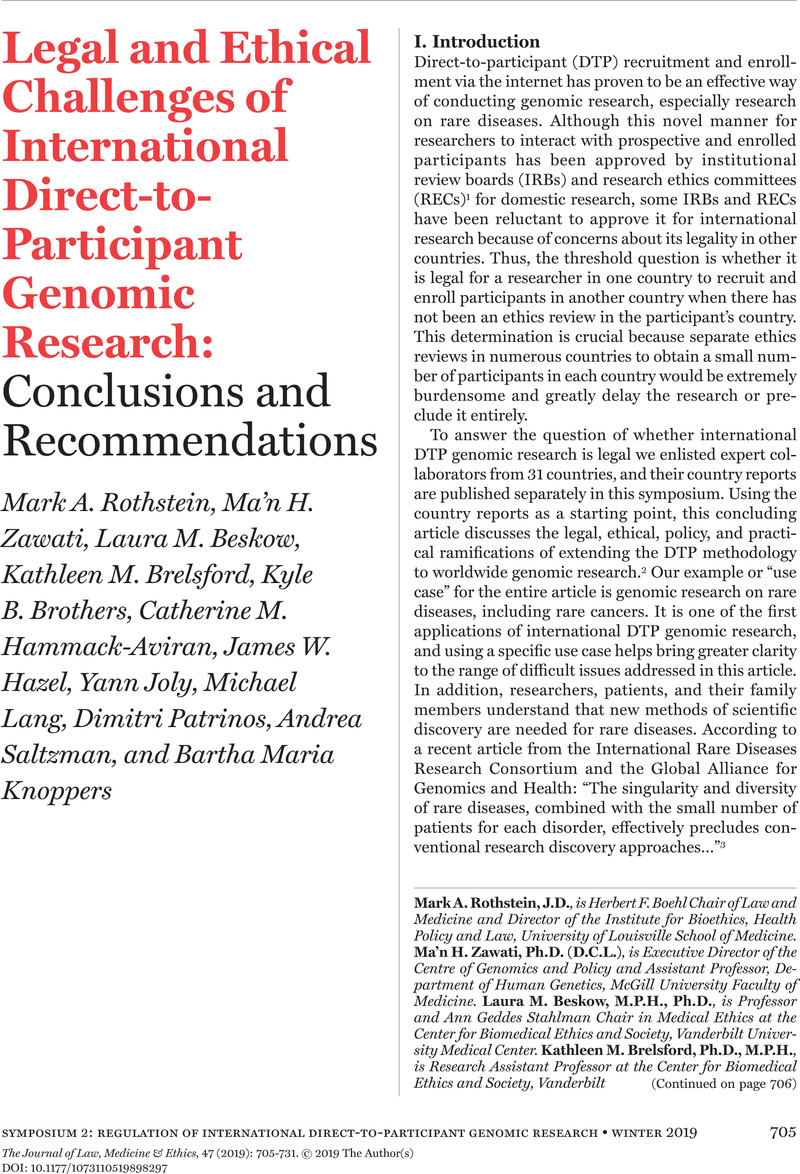Crossref Citations
This article has been cited by the following publications. This list is generated based on data provided by Crossref.
Uffelmann, Emil
Huang, Qin Qin
Munung, Nchangwi Syntia
de Vries, Jantina
Okada, Yukinori
Martin, Alicia R.
Martin, Hilary C.
Lappalainen, Tuuli
and
Posthuma, Danielle
2021.
Genome-wide association studies.
Nature Reviews Methods Primers,
Vol. 1,
Issue. 1,
Thorogood, Adrian
and
Beauvais, Michael J. S.
2021.
International Coordination of Research Ethics Review: An Adequacy Model.
Philosophies,
Vol. 6,
Issue. 4,
p.
93.
Rothstein, Mark A.
Zawati, Ma’n H.
Thorogood, Adrian
Beauvais, Michael J. S.
Joly, Yann
Brothers, Kyle B.
Lang, Michael
Andanda, Pamela
Ho, Calvin
Isasi, Rosario
Kaye, Jane
Lee, Won Bok
Nnamuchi, Obiajulu
Saltzman, Andrea
and
Knoppers, Bartha Maria
2022.
Streamlining ethics review for international health research.
Science,
Vol. 375,
Issue. 6583,
p.
825.
Kogetsu, Atsushi
and
Kato, Kazuto
2022.
Framework and Practical Guidance for the Ethical Use of Electronic Methods for Communication With Participants in Medical Research.
Journal of Medical Internet Research,
Vol. 24,
Issue. 4,
p.
e33167.
Lang, Michael
and
Zawati, Ma’n H.
2022.
Returning individual research results in international direct-to-participant genomic research: results from a 31-country study.
European Journal of Human Genetics,
Vol. 30,
Issue. 10,
p.
1132.
Rothstein, Mark A.
Patrinos, Dimitri
Brothers, Kyle B.
Clayton, Ellen Wright
Joly, Yann
Zawati, Ma'n H.
Andanda, Pamela
Arawi, Thalia
Castañeda, Mireya
Chalmers, Don
Chen, Haidan
Ghaly, Mohammed
Hatanaka, Ryoko
Hendriks, Aart C.
Ho, Calvin W.L.
Kaye, Jane
Krekora-Zając, Dorota
Lee, Won Bok
Mattsson, Titti
Nicolás, Pilar
Nnamuchi, Obiajulu
Rial-Sebbag, Emmanuelle
Siegal, Gil
Wathuta, Jane M.
and
Knoppers, Bartha Maria
2023.
Concordance of International Regulation of Pediatric Health Research.
The Journal of Pediatrics,
Vol. 260,
Issue. ,
p.
113524.



